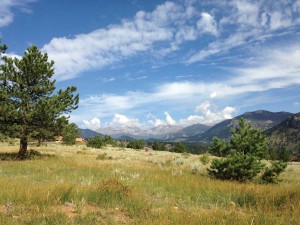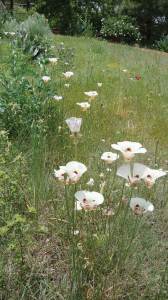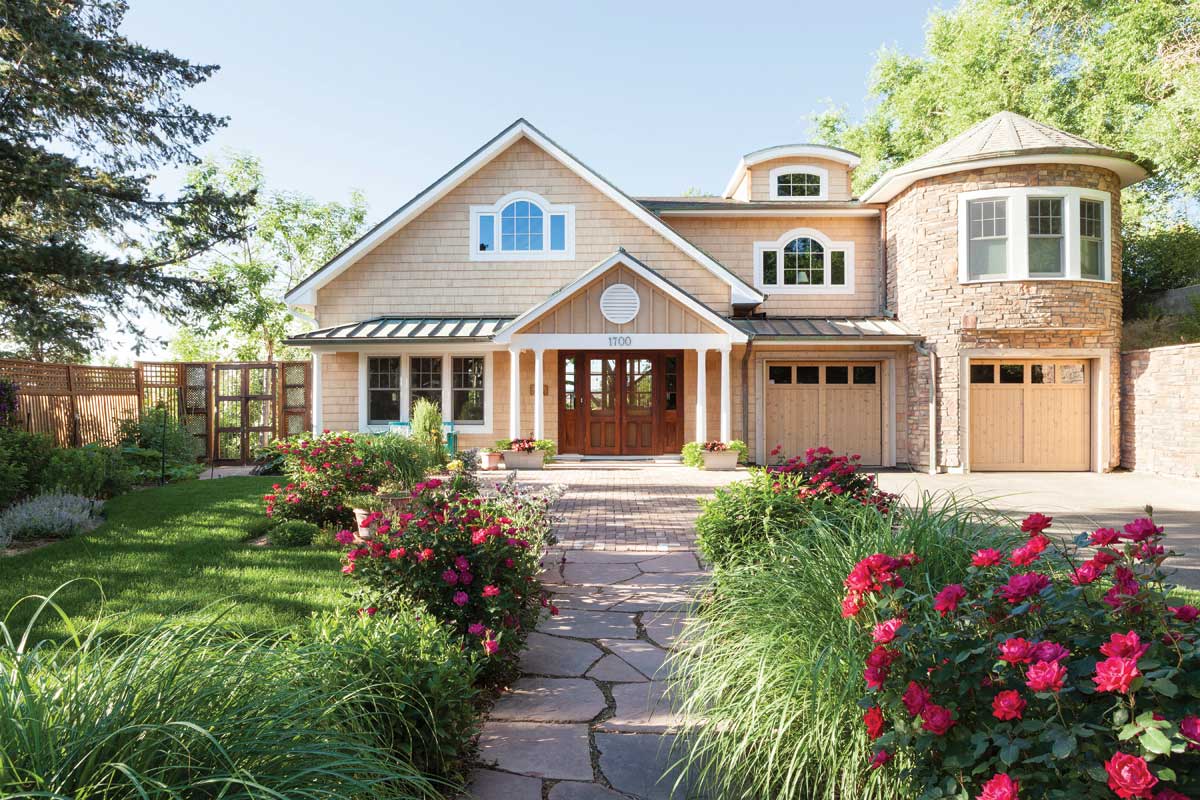Meadow Magic
25 Oct 2014
How to turn a water-thirsty lawn into a low-maintenance meadow
By Panayoti Kelaidis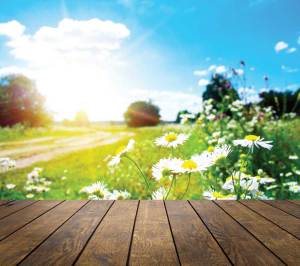 From the highest slopes to the flattest plains, Colorado is a state of meadows. Flowery meadows in our plains, foothills, and montane and alpine heights fill the landscape, and are perhaps the principal reason many of us love living here. With all our diverse terrain tucked to the brim with glorious wildflowers, who would want to live in a world without meadows?
Ironically, the closest thing most of us have to a meadow in our home gardens is our lawn—a garden element that ultimately derives from the sheep-cropped meadows of Europe (especially Great Britain) that we’ve tried to perfect into a sort of green carpet devoid of even the occasional dandelion or clover to spangle it—reminding us that nature abhors a vacuum, and nothing is perhaps more vacuous than lawn. On some Aurora medians, they’ve given up the struggle and paved them with Astroturf—the ultimate slap in Mother Nature’s face! I have read that if you assembled all the lawns in the United States into a single spot, you could cover the good state of Iowa with it.
I love the greensward in a park where kids can play, and it’s appropriate in many homes and settings. But lawns require an exorbitant amount of water, and (alas) most homeowners douse them—often improperly—with pretty toxic chemicals. On windy days, these waft where they shouldn’t; the Earth is a closed system, after all. And fertilizing improperly can pollute streams and promote algal blooms or worse.
Is it any wonder, then, that a few hardy souls have sought an alternative to sterile greensward? A few folks have accepted the challenge and actually succeeded in creating a meadow in their gardens. I remember last spring driving by a home not far from where I live that had its lawn space completely carpeted with native wildflowers—thousands of blossoms of suckering evening primrose (Oenothera coronopifolia) interspersed with dense clumps of dazzlingly azure prairie penstemon (Penstemon angustifolius) and the vivid-yellow crenulated flowers of our prairie puccoon (Lithospermum incisum). I realized the owners made sure their house hadn’t disturbed the natural meadow surrounding it, and that they’d simply weeded the landscape—presto, a magical meadow!
From the highest slopes to the flattest plains, Colorado is a state of meadows. Flowery meadows in our plains, foothills, and montane and alpine heights fill the landscape, and are perhaps the principal reason many of us love living here. With all our diverse terrain tucked to the brim with glorious wildflowers, who would want to live in a world without meadows?
Ironically, the closest thing most of us have to a meadow in our home gardens is our lawn—a garden element that ultimately derives from the sheep-cropped meadows of Europe (especially Great Britain) that we’ve tried to perfect into a sort of green carpet devoid of even the occasional dandelion or clover to spangle it—reminding us that nature abhors a vacuum, and nothing is perhaps more vacuous than lawn. On some Aurora medians, they’ve given up the struggle and paved them with Astroturf—the ultimate slap in Mother Nature’s face! I have read that if you assembled all the lawns in the United States into a single spot, you could cover the good state of Iowa with it.
I love the greensward in a park where kids can play, and it’s appropriate in many homes and settings. But lawns require an exorbitant amount of water, and (alas) most homeowners douse them—often improperly—with pretty toxic chemicals. On windy days, these waft where they shouldn’t; the Earth is a closed system, after all. And fertilizing improperly can pollute streams and promote algal blooms or worse.
Is it any wonder, then, that a few hardy souls have sought an alternative to sterile greensward? A few folks have accepted the challenge and actually succeeded in creating a meadow in their gardens. I remember last spring driving by a home not far from where I live that had its lawn space completely carpeted with native wildflowers—thousands of blossoms of suckering evening primrose (Oenothera coronopifolia) interspersed with dense clumps of dazzlingly azure prairie penstemon (Penstemon angustifolius) and the vivid-yellow crenulated flowers of our prairie puccoon (Lithospermum incisum). I realized the owners made sure their house hadn’t disturbed the natural meadow surrounding it, and that they’d simply weeded the landscape—presto, a magical meadow!
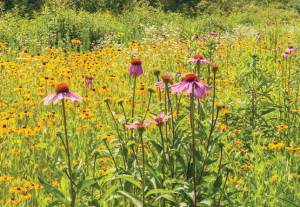
- Black-eyed Susans and daisies of all types are good choices for an urban meadow, as are coneflowers, Texas muhly grass and hundreds of flowering bulbs that can add color to buffalo-grass meadows that haven’t greened up yet.
Grasses of a Different Ilk
Most of us aren’t blessed with relatively undisturbed native meadows wrapping around our homes (except, perhaps, some lucky souls who live in the foothills). But I can imagine no better garden to have than a meadow like my neighbors’. How can a homeowner go about creating something so fine and artistic? If you live on soil with a lot of clay, you could go the buffalo-grass route. Strains of buffalo grass, like ‘Legacy’ and ‘Heritage’, have been bred to be as clean and neat a turf as any traditional lawn, but require far less water. A wealth of plants can “spice up” a buffalo-grass lawn—especially in the month or two in spring and autumn when this lawn stays straw brown and the neighbors’ are green. A number of local gardeners have planted thousands of bulbs in buffalo grass. A judicious choice of species-type crocuses and tulips can literally pave a buffalo grass lawn with vivid color in March and April when it otherwise might be wintry brown. These bulbs are cheap—luckily, because you must plant thousands to make an impression—but planting so many bulbs can be tedious, unless you pass a lawn aerator over the turf before you plant the bulbs. It can then be almost a game to fill all the divots with little bulbs. Top-dress with some fine soil or sand, and you’ll have a magic carpet of color in just a few years’ time. That first spring can be a bit disheartening, though, when your meadow consists of just a flower or two emerging from the erstwhile divots. But give the bulbs a chance to clump up and they’ll make a colorful statement. If you live on sandy soil, like I do, buffalo grass does not perform as well as blue grama grass, which is harder to find as a turf. You must sow seed to establish a blue grama lawn, which is a whole different story that we won’t attempt to write here.The Makings of a Meadow
To till or not to till, that is the question. Should you wish to replace all or part of your bluegrass lawn with meadowland, one option is to professionally remove the turf and replace it with new native turf—a rather expensive endeavor. A simpler route is to kill your bluegrass with a natural herbicide when it is in active growth, or bake it in thick layers of black plastic or newspaper for a few weeks. Before you replant, make sure no green patches remain, no matter which method you choose. Next, purchase native grass plugs and plant them in late May or June to provide cover by late summer. Planting appropriate drought-tolerant perennials among the grasses as you do this would be the simplest way of creating a meadow. For instance, try planting our native blazing star (Liatris punctata), alongside dozens of smaller penstemons and other natives that are widely available. What you plant and how you go about creating a low-maintenance meadow has as many permutations as any sort of perennial garden. But the difference is a meadow has that commonality of grass that weaves together the flowers, and also helps keep down weeds.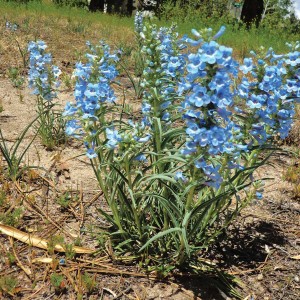
- Dazzlingly azure prairie penstemon (Penstemon angustifolius) is one of many flowers you could plant to create an urban meadow.
 Panayoti Kelaidis is senior curator and director of outreach at Denver Botanic Gardens.
Panayoti Kelaidis is senior curator and director of outreach at Denver Botanic Gardens. 
